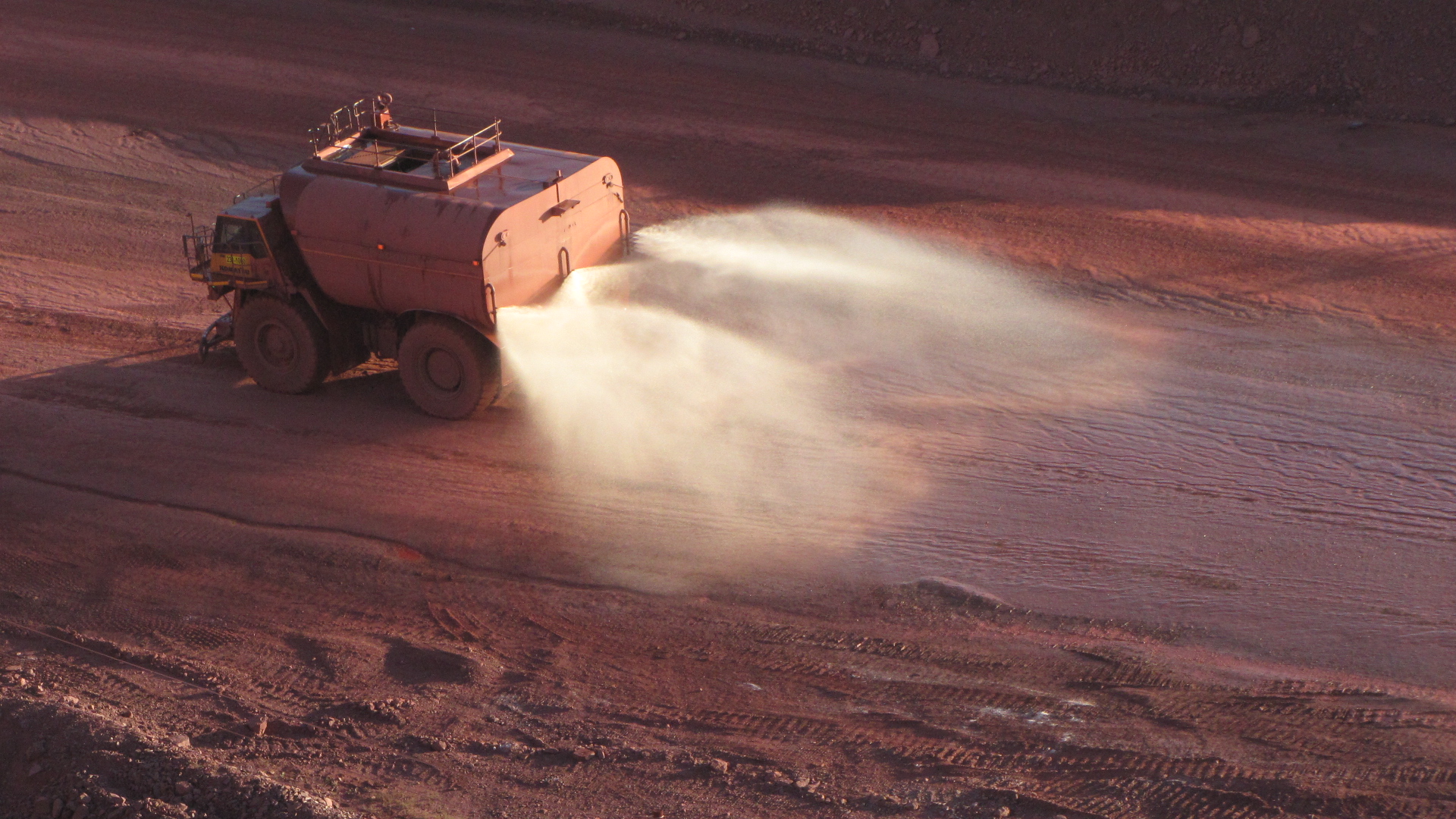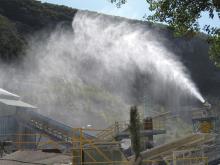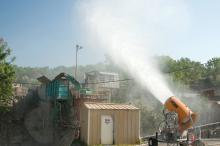
As dust suppression systems remain a grudge buy for many dust-emitting operations such as quarries and mines in Africa at large, South African supplier I-CAT reiterates that, apart from just meeting legislative requirements, the benefits of efficient and effective dust suppression systems are many and proven.
Lourens Jansen van Rensburg, director at I-CAT, a South African supplier of dust suppression systems since 2008, says benefits of efficient and effective dust suppression systems are proven and multiple. He says dust suppression has become a “must have” rather than a “nice to have” system, not only to comply with health & safety and air quality regulations, but also to reap the several productivity and cost advantages these solutions can offer.
“Dust suppression should be more than just about reaching legislative milestones. Dust is a pervasive problem; it undermines the health of people, reduces the lifespan of machinery and has a negative impact on the environment at large. It can damage the most sophisticated equipment and technology. It’s therefore imperative for industries to effectively control dust on a continuous basis,” says Van Rensburg.
Hein Irving, head of the Dust Division at I-CAT, reasons that water – which is very limited in its effectiveness – remains the most commonly used suppressant. “The process of using only water to control dust is a never-ending expensive task that offers very limited dust suppression capabilities,” he says.
By adding various I-CAT additives to water, operations can increase the wetting ability of water to effectively supress dust. Water savings of up to 80% can be achieved, depending on various factors such as the climatic conditions on site, traffic levels and the in-situ material of the haul road.
“We have an array of dust suppression products which basically cover two areas. The first area is road dust control on municipal and rural roads as well as haulage roads on mines and quarries. The second area we cover is the plant area where dust control for mines and quarries remains an important issue, especially considering the level of dust emissions during crushing and screening processes,” says Van Rensburg.
In the roads sector, I-CAT offers three different products. The RDC 20 (Road Dust Control), ideal for secondary or temporary haulage roads, is said to be the most prominent product in I-CAT’s stable. “RDC 20 is an entry-level product that we supply for mostly every day application where roads are normally heavily trafficked,” explains Van Rensburg. “It is mainly for temporary roads that are mainly run for a short period, say for a month or two before they are demolished or decommissioned as part of the mining process.”
Irving states that RDC 20 is an innovative formulation of blended emulsified co-polymers and ionic modifiers. “RDC 20 is a water-soluble anionic polyelectrolyte polymer. When sprayed onto the road surface, it will form a durable cross-linked matrix. The matrix will bind fine soil particles into larger heavier particles, which would be less prone to becoming airborne,” he says.
Several major benefits can be achieved when RDC 20 is applied. It improves grip on the roads due to the friction between two organic materials, thereby improving safety. Braking distances can also be significantly reduced due to the improved grip. Operations that use RDC 20 can save up to 80% water used for dust suppression, while its ability to bind soil particles reduces water run-off, thereby reducing road degradation and subsequently reducing road maintenance frequency.
For road dust control, I-CAT also offers GreenGrip, a polymer-based, gravel road sealant. “It is an environmentally safe alternative to chemically-based products for semi-permanent gravel roads on mines and quarries where you don’t need continuous application,” explains Van Rensburg. GreenGrip is water-soluble and is also easily incorporated into routine dust suppression procedures with no requirement for special equipment or handling precautions.
I-CAT also offers GreenBit, a natural binding agent combined with an emulsified bituminous product to create a durable gravel road sealant. GreenBit is said to have been tested extensively on both public and mine haulage roads. It produces an asphalt-like, dust-free surface with lengthy intervals between maintenance applications, making it ideal for permanent roads.
For plant areas, I-CAT offers misting systems which use both compressed air and water. The company acquired the sole distribution rights for sub-Saharan Africa for low pressure misting systems from Europe, which have since been modified and adjusted for application in both industrial and mining sectors in Africa.
I-CAT owns the distribution rights of the Scrub Mist System, a nozzle spray system manufactured in Europe. “Its water usage is very low and it’s very effective in capturing dust around conveyor belts and transfer points,” says Van Rensburg. The technology basically breaks down water drops to below 15 microns, thereby neutralising and controlling dust at the source of emission via the grouping of dust elements into larger agglomerations.
Meanwhile, the DustMonster product line provides sound results by creating an ultra-fine mist that attracts dust, encapsulating airborne particles and driving them to the ground. The units are fully automatic, easily adaptable and completely portable. With its 35 hp motor and user-definable 359 degrees oscillation, the DM-110 has a throw of more than 100 m, giving the machine a coverage area of 2,6 hectares. To put that in perspective, one machine could cover five rugby fields with its dust-trapping atomised mist.







